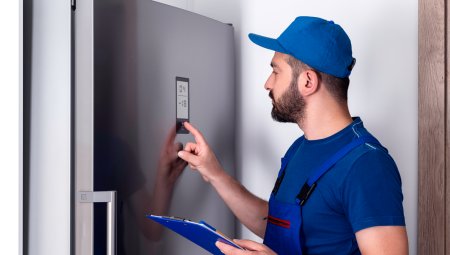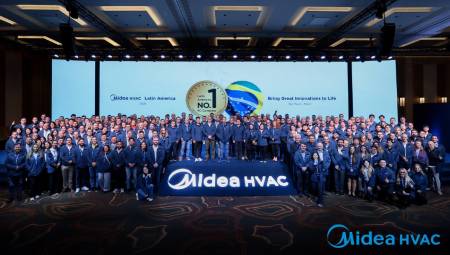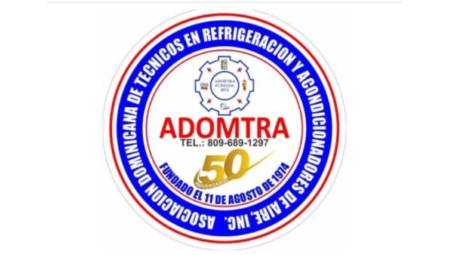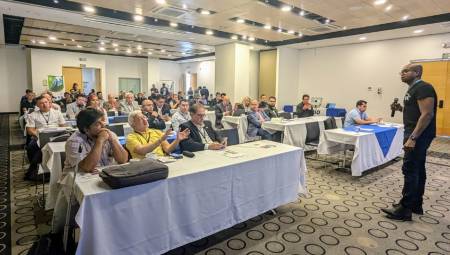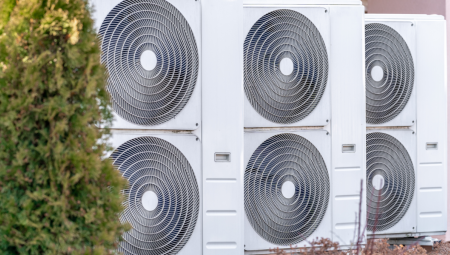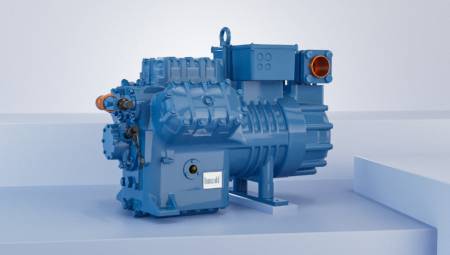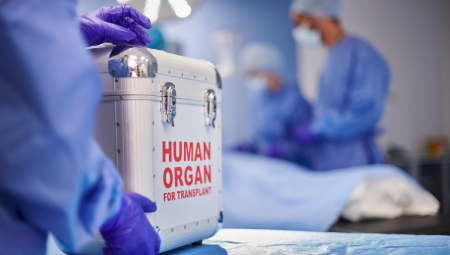 Environmental concerns and protocols such as the one in Montreal force A/C equipment manufacturers to implement strategies aimed at changing the coolers of their equipment. This article provides an analysis of the situation.
Environmental concerns and protocols such as the one in Montreal force A/C equipment manufacturers to implement strategies aimed at changing the coolers of their equipment. This article provides an analysis of the situation.By: Carlos Obella*
U.S. refrigeration and air conditioning equipment manufacturers will be forced to stop using ozone-depleting refrigerant gases as of 2010, in anticipation of the Montreal Protocol. The European Union had already implemented a similar regulation that has been in force since 2004.
This means that over the next few years, hydro-chlorine-fluorine-carbon (HCFC) refrigerant gases, such as R22, will definitely be replaced by hydro-fluorinated-carbon refrigerants (HFCs, without chlorine) such as R410A for air conditioning globally.
Not only the preservation of the ozone layer has been a concern. Currently, the level of attention on the environmental impact generated by climate change related to the so-called "Greenhouse Effect" has increased considerably. Many scientists now believe that the gases included in the list or "basket" of the so-called "Kyoto Protocol", among which are CFCs, HCFCs and also HCF, contribute to global warming.
Effects on the environment
Carbon dioxide (CO2), produced by burning fossil fuels for electricity generation and transport, is, to a large extent, the gas that presents the most significant effect among all the so-called "greenhouse gases". Air conditioning and refrigeration systems consume electrical energy, often generated by thermoelectric plants, which burn fossil fuels, so an improvement in the efficiency of these equipment will generate, indirectly, a reduction in the generation ofCO2.
Even in countries where most of the electricity is produced through hydroelectric plants, as is the case in Brazil, the improvement in the energy efficiency of air conditioning and refrigeration equipment will contribute positively by reducing the need for more hydroelectric works that generate immense lakes, which in turn eliminate extensive forested areas responsible for the natural processing ofCO2.
Since the choice of refrigerant type can significantly influence the energy performance of the system, the industry has carefully researched many replacements for R-22 in order to identify alternatives as environmentally friendly as possible.
The path of options
Several test criteria have been established to establish whether or not a replacement refrigerant for R-22 can be considered as a long-term option. These potential replacements must be safe, non-flammable and non-toxic to humans, environmentally "friendly," as well as economical and energy efficient. Precisely the R410A complies with each and every one of these characteristics.
Applied in air conditioning systems up to 250 tons of refrigeration, it turns out to be more efficient, able to reduce the energy consumption of Copeland Scroll compressors and, indirectly, reduce total carbon dioxide (CO2) emissions. Extensive research has shown that R-410A is the best long-term replacement for R22 in commercial and residential air conditioning systems. The air conditioning industry is entirely willing to adopt R-410A primarily in applications with scroll compressors.
In fact, U.S. energy efficiency regulations, in place since 2006, forced manufacturers to implement new, more efficient R-410A product lines, which are available on the market even before the January 1, 2010 deadline. R-410A has quickly become the refrigerant adopted for air conditioning, not only because it has higher efficiency, but also because its equivalent total impact on global warming (TEWI) is lower than other options. TEWI considers both the direct global impact (GWP) produced by potential refrigerant gas leaks, and the indirect one caused, as we have seen, by the emission of CO2 by burning fossil fuels in thermoelectric plants that generate the energy that feeds the air conditioning equipment.
The benefits of the R-410A
Several of the features of the R-410A are different from those of the R-22. The R-410A works at higher pressures, is more efficient, allows to reduce the size of the exchangers and the diameter of the pipes. It also makes it possible to reduce the refrigerant gas load and improve the isoentropic efficiency of compression. The most
Advanced Compressors Scroll ZP brand Copeland, is optimized for R-410A, which allows to obtain better efficiency, greater reliability and lower noise level.
Frequently Asked Questions about the R410A
1.Can the refrigerant of a system that works with R22 be changed to R410A?
No. The pressures handled by a system with R410A are approximately 50% higher than those of R22. The physical and thermodynamic characteristics of the R410A are different as well. For example, the relationship between the volumetric displacement of the compressor and the power of the engine is different for the same capacity,
compared to R22.
2.Should a computer that currently operates with R22 be redesigned to do so with R410A?
Yes. In most cases this redesign translates into potential benefits generated by the reduction of the size of the exchangers, given the better properties of R410A for heat transmission. Compressors, flow control devices, and system protectors are typically different and approved to operate at higher pressures.
3. What are the fundamental differences between a compressor for
R22 and one for R410A?
There are three fundamental differences:
a) Mineral oil (MO), commonly applied with R22 (HCFC) is not miscible with R410A (HFC). Compressors approved for the latter use synthetic oils called Polyolester (POE), specified by the manufacturer.
b) The relationship between the volumetric displacement and the power of the compressor engine is different for the same capacity. A pound of R410A is capable of absorbing a similar amount of heat as one of R22, but requires to do so a volumetric displacement up to 40% less per HP of rated engine power.
c) Operating pressures are between 50 and 60% higher, which requires a particularly suitable design, with higher test pressures and different internal safety devices.
4. In addition to higher pressures, are there other factors to consider when applying R410A?
Yes. Mainly moisture and contaminants.
a) Moisture is quickly and easily absorbed by polyolester oil, so extreme care must be taken when exposing the open system or compressor to the atmosphere, reducing the time of such exposure to the minimum possible. Good practice dictates that the original plugs of the compressor's refrigeration connections should not be removed until everything is ready for immediate welding.
b) Polyolester oil (POE) is an excellent cleaner capable of removing internal impurities in the system that mineral oil (MO) would not remove. This can cause plugging in the holes of expansion devices. Using a slight stream of inert gas during the welding procedure avoids the possible generation of copper oxide particles that can then be removed and dragged by the POE through the system. In reality, the care that should be taken with HFC + POE is the same as good practice dictates for HCFCs + MO, only these are even more critical and important with POE.
5. What is the POE oil available in the market?
All authorized distributors of Emerson Climate Technologies products offer Polyolester oil, compatible with the full range of compressors approved for R410A. See: http://www.emersonclimate.com/espanol/pdfs/1300%20POE-Oil-Noticias.pdf.
6. Since moisture is a concern, what is the appropriate dehydrating filter to be used with R410A?
It is recommended to use dehydrating filters with a 100% molecular composition for new systems. While for the service of existing systems filters with a composition of 75% molecular and 25% alumina are recommended. For more information see the application bulletin AE11-1297 in our online information system (OPI), going to: www.emersonclimate.com/espanol.
7. How can an R410A approved compressor be identified?
In the nomenclature that identifies the models of Compressor Scroll brand
Copeland, the second letter after the "Z" is a "P" for all those
compressors approved to operate with R410A. For example: ZP54K3E...
8. Should the suction and discharge lines used for R22 be resized to R410A?
Not necessarily. Although the ideal diameter for R410A is smaller, this value usually falls between two standard diameter values, so the larger one is taken which is usually the same as for R22 to avoid potential problems caused by the pressure drop.
9. Should the R410A gas charge be completely changed in case of leaks?
No. R410A is a near-toilet refrigerant, with a slip rate of less than 1°K.
Leaks do not affect the composition of the remaining gas in the system.
10. Is R410A a safe refrigerant?
Yes. The R410A is rated A1 under ASHRAE 34 standards
(implies non-toxic or flammable). Compared to the higher pressures compared to R22, it should be noted that other gases packaged in cylinders, frequently used in routine service practices, have much higher pressures than R410A, even at room temperature. This is the case of Oxygen, Nitrogen,CO2 and even Acetylene. R410A cylinders are tested at pressures of around 1,000 psi and have appropriate safety devices (relief valves).
Read and follow the gas manufacturer's safety recommendations to the letter
packaged and handled with pressure gauges that have the appropriate scale for R410A. For more information about the features and availability of our R410A approved products contact our offices in Latin America by visiting our contact page at: http://www.emersonclimate.com/espanol/emerson_climate_oficinas.htm.
*About the author
Carlos Obella is the technical director of Emerson Climate Technologies Latin America.



